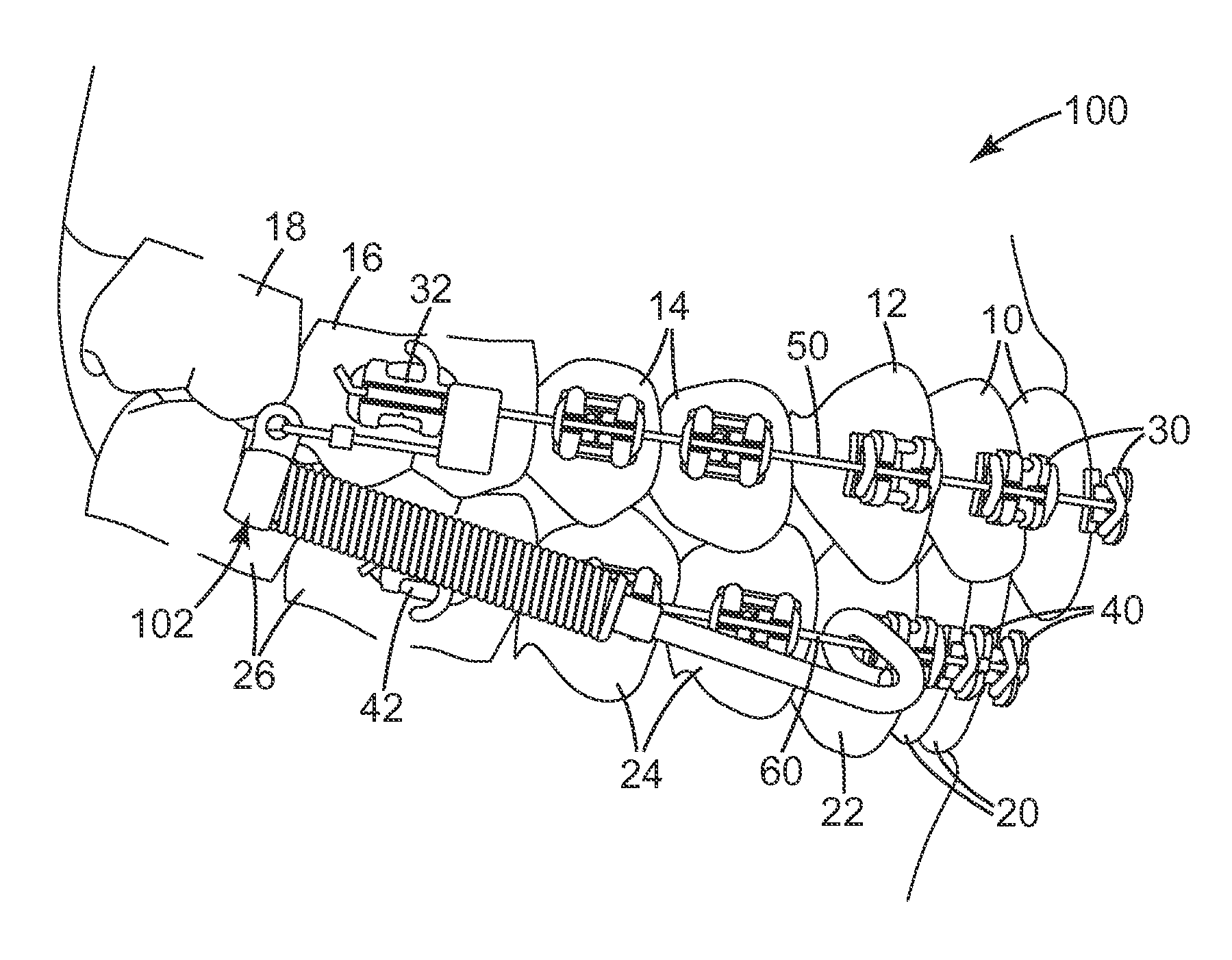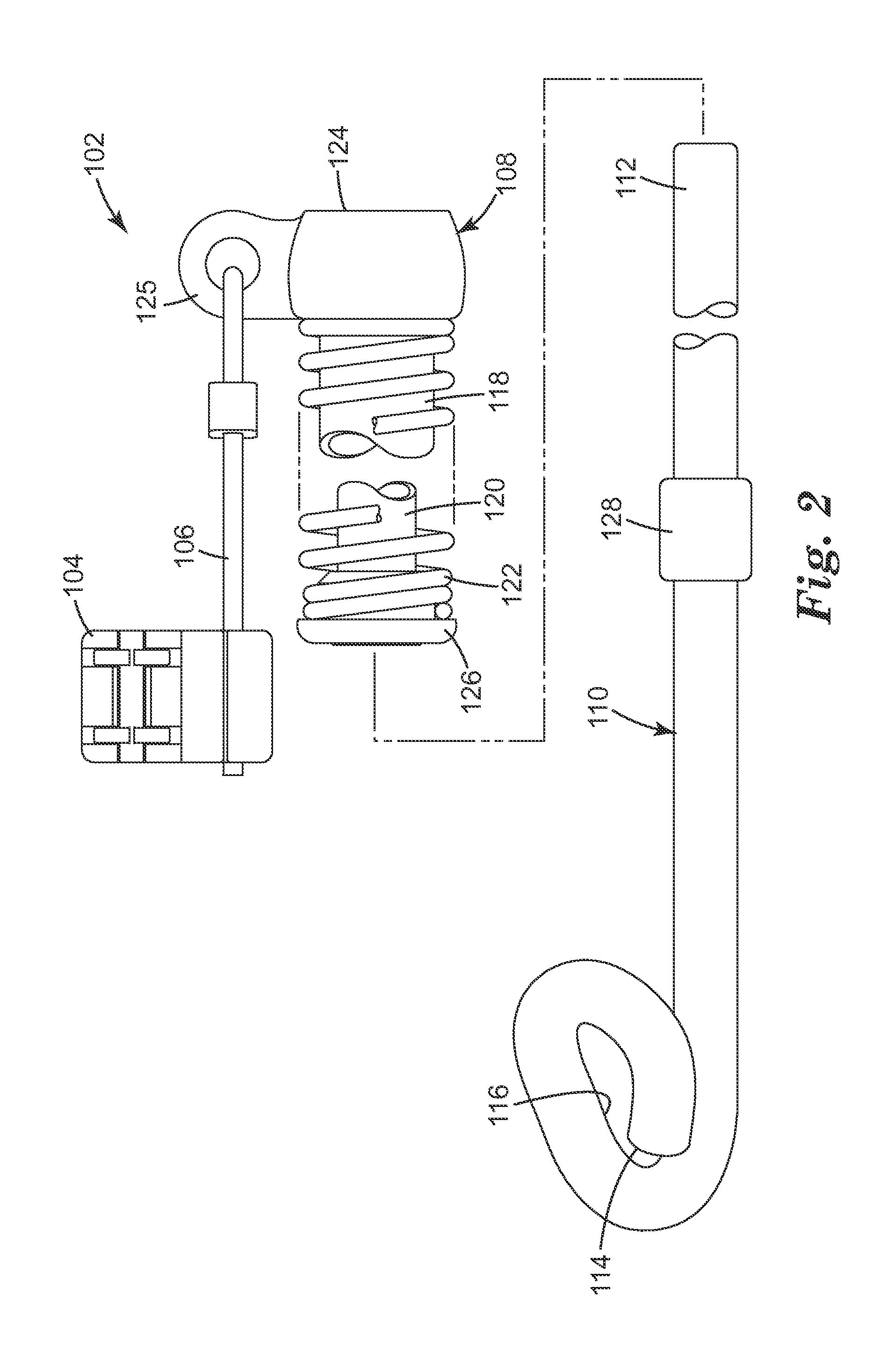Intraoral orthodontic corrector
a technology of orthodontic corrector and intraoral cavity, which is applied in the field of orthodontic treatment, can solve the problems of increasing the risk of bond failure, increasing the risk of breakage or bond failure, and affecting the stability of the same coupling, so as to improve the robustness
- Summary
- Abstract
- Description
- Claims
- Application Information
AI Technical Summary
Benefits of technology
Problems solved by technology
Method used
Image
Examples
Embodiment Construction
[0033]The present disclosure relates to orthodontic devices, correctors, and assemblies that apply therapeutic forces to dental structures during the course of treatment. Exemplary embodiments of these devices, correctors, and assemblies shown herein are useful for treatment of Class II malocclusions. However, these should not be deemed to unduly limit the invention. For example, these embodiments could also be adapted for use in treating class III malocclusions. Alternatively, these embodiments could be adapted for use within either the upper or lower arch individually.
[0034]FIG. 1 depicts an orthodontic assembly according to one exemplary embodiment, broadly designated by the numeral 100. The assembly 100 represents the combination of orthodontic appliances installed on the right side of the upper and lower dental arches of a patient as shown. Located on the upper dental arch are a set of teeth, including upper anteriors 10, upper cuspid 12, upper bicuspids 14, upper first molar 1...
PUM
 Login to View More
Login to View More Abstract
Description
Claims
Application Information
 Login to View More
Login to View More - R&D
- Intellectual Property
- Life Sciences
- Materials
- Tech Scout
- Unparalleled Data Quality
- Higher Quality Content
- 60% Fewer Hallucinations
Browse by: Latest US Patents, China's latest patents, Technical Efficacy Thesaurus, Application Domain, Technology Topic, Popular Technical Reports.
© 2025 PatSnap. All rights reserved.Legal|Privacy policy|Modern Slavery Act Transparency Statement|Sitemap|About US| Contact US: help@patsnap.com



